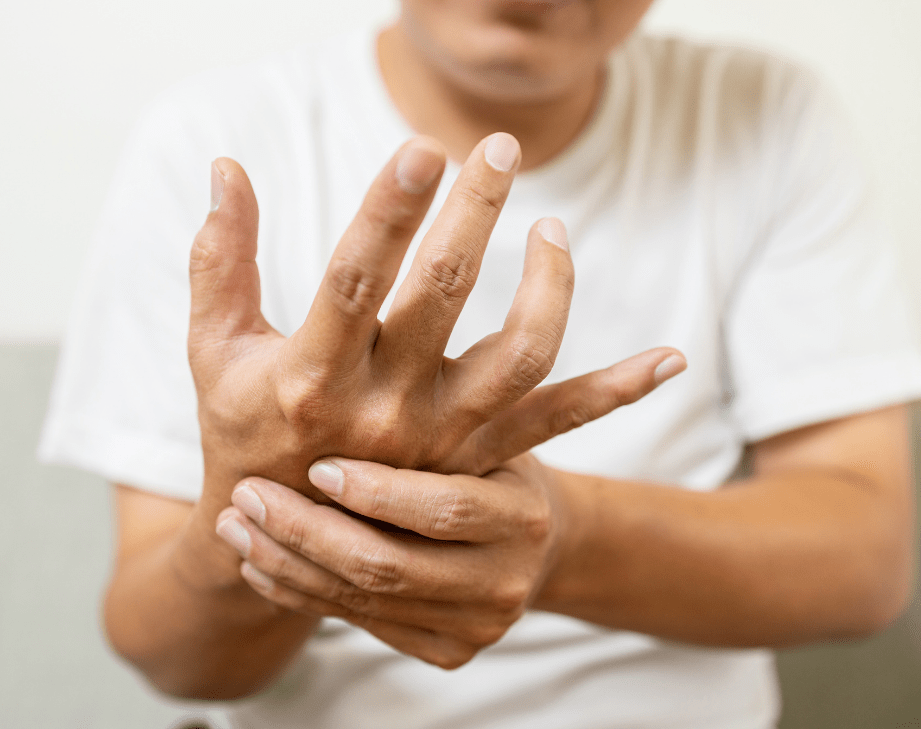Parkinson’s disease is a progressive disease of the nervous system. It is estimated that 4 to 6 million people around the world suffer from the condition. Parkinson’s disease becomes more common with increasing age, though there are those diagnosed with early-onset Parkinson’s disease. Symptoms of the disease usually first appear in people over the age of 50, although as noted above, younger people can also develop the disease. There is no evidence that Parkinson’s disease is hereditary, although in around 5% of cases there is another family member affected.
Signs and symptoms:
Three common PD symptoms that gradually develop are:
- Slowness of movement (bradykinesia). For example, it may become more of an effort to walk or to get up out of a chair.
- Stiffness of muscles (rigidity) and muscles may feel more tense. Also, your arms do not tend to swing as much when you walk.
- Shaking (tremor) is common, but does not always occur. It typically affects the fingers, thumbs, hands and arms but can affect other parts of the body. It is most noticeable when you are resting. It may become worse when you are anxious or emotional.
Some other symptoms may develop due to problems with the way affected brain cells and nerves control the muscles. These include:
- Fewer facial expressions such as smiling or frowning. Reduced blinking.
- Difficulty with fine movements such as tying shoe laces or buttoning shirts.
- Difficulty with writing (handwriting tends to become smaller).
- Difficulty with balance and posture and an increased tendency to fall.
- Speech may become slow and monotonous.
- Swallowing may become troublesome and saliva may pool in the mouth.
- Tiredness and aches and pains.
When to see a doctor?
See your doctor if you have any of the symptoms associated with Parkinson's disease — not only to diagnose your condition but also to rule out other causes for your symptoms.
پارکنسنز کی بیماری (PD- Parkinson's Disease):
پارکنسنز کی بیماری اعصابی نظام کی ایک بیماری ہے۔ ایک اندازے کے مطابق دنیا بھر میں 4 سے 6 ملین لوگ اس بیماری کا شکار ہیں۔ بڑھتی ہوئی عمر کے ساتھ پارکنسنز کی بیماری زیادہ ظاہر ہوتی جاتی ہے ، جب کہ کچھ ایسے بھی لوگ ہیں جنہیں کم عمر میں ہی پارکنسنز کی بیماری کی تشخیص ہوجاتی ہے۔ بیماری کی علامات عام طور پر پہلے 50 سال سے زیادہ عمر کے لوگوں میں ظاہر ہوتی ہیں ، حالانکہ جیسا کہ پہلے بیان کیا گیا ہے ، کم عمر افراد میں بھی یہ بیماری پیدا ہو سکتی ہیں۔ اس بات کا کوئی ثبوت نہیں ہے کہ پارکنسنز کی بیماری موروثی ہے مگر پھر بھی تقریبا پانج فیصد لوگوں میں خاندان کا ایک اور فرد متاثر ہوتا ہے۔
نشانات و علامات:
تین عام PD علامات جو آہستہ آہستہ ظاہر ہوتی ہیں:
- نقل و حرکت میں سستی: مثال کے طور پر ، چلنے یا کرسی سے اٹھنے میں دشواری ہو سکتی ہے۔
- پٹھوں سخت ہونا اور پٹھوں میں زیادہ تناؤ محسوس ہونا۔ اس کے علاوہ جب آپ چلتے ہیں تو آپ کے بازو زیادہ جھولتے نہیں ہیں۔
- لرزنا (کانپنا) عام علامت ہے لیکن ہر مریض میں نہیں پایا جاتا ۔ یہ عام طور پر انگلیوں ، انگوٹھوں ، ہاتھوں اور بازوؤں کو متاثر کرتا ہے لیکن جسم کے دوسرے حصوں کو بھی متاثر کرسکتا ہے۔ آرام کے وقت یہ سب سے زیادہ نمایاں ہوتا ہے۔ جب آپ پریشان یا جذباتی ہوتے ہیں تو یہ مزید بگڑ سکتا ہے۔ دماغ کے خلیوں اور اعصابی کمزوری کے مسائل کی وجہ سے کچھ دوسری علامات پیدا ہو سکتی ہیں جن میں شامل ہیں:
- چہرے کے کم تاثرات جیسے مسکرانا یا پلک جھپکنا۔
- انگلیوں کی پیچیدہ حرکت کرنے میں دشواری جیسے جوتوں کے تسمے باندھنا یا قمیض کے بٹن بند کرنا۔ -
- لکھنے میں دشواری ( تحریر چھوٹی ہوجاتی ہے)
- توازن میں مشکل اور گرنے کا خدشہ زیادہ ہوتا ہے۔
- نگلنا مشکل ہو سکتا ہے اور منہ میں تھوک جمع ہو سکتا ہے۔
- تھکاوٹ اور جسم درد۔
ڈاکٹر سے کب ملنا ہے۔
اپنے ڈاکٹر سے ملیں اگر آپ کے پاس پارکنسنز کی بیماری سے وابستہ علامات ہیں - نہ صرف آپ کی حالت کی صحیح تشخیص کے لیے بلکہ آپ کی علامات کی دیگر وجوہات کو بھی مسترد کرنے کے لیے ڈاکٹر سے ملاقات کریں۔
Doctors to consult (Neurologist):
Dr Gulab Shah Kakar, Dr Samad Panezai, Dr Saeed Shaikh
Note: Click the Doctor's name to make an appointment.
Reference:
https://www.ninds.nih.gov/Disorders/All-Disorders/Parkinsons-disease-Information-Page
https://www.mayoclinic.org/diseases-conditions/parkinsons-disease/symptoms-causes/syc-20376055

